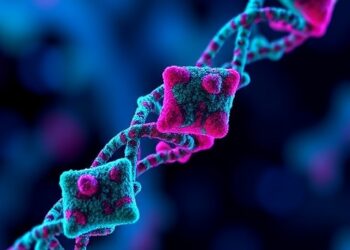Despite efforts, tumor recurrence is diagnosed in 35–40% of patients with stage III squamous cell lung carcinoma (SCLC) during the first year after treatment. The purpose of the present investigation was to determine the levels of cytokeratin-fragment 19 (CYFRA 21-1) in blood serum, the percentages of lymphocytes containing chemokine receptor 1 (CXCR1, %, lymphocytes), and the percentages of monocytes containing chemokine receptor 2 (CXCR2, %, monocytes), as well as their combined model before and after treatment for the early detection of recurrence.
Background and objectives
Despite efforts, tumor recurrence is diagnosed in 35–40% of patients with stage III squamous cell lung carcinoma (SCLC) during the first year after treatment. The purpose of the present investigation was to determine the levels of cytokeratin-fragment 19 (CYFRA 21-1) in blood serum, the percentages of lymphocytes containing chemokine receptor 1 (CXCR1, %, lymphocytes), and the percentages of monocytes containing chemokine receptor 2 (CXCR2, %, monocytes), as well as their combined model before and after treatment for the early detection of recurrence.
Methods
Forty-eight patients (29 men and 19 women) with newly diagnosed stage III SCLC were examined. Serum levels of CYFRA 21-1, CXCR1, %, lymphocytes, and CXCR2, %, monocytes in peripheral blood were measured before treatment and at three weeks, three months, and six months after treatment using a chemiluminescence immunoassay analyzer and a flow cytometer, respectively.
Results
The levels of all determined indicators, which were elevated before treatment, decreased sharply three weeks after treatment. Subsequently, three months and six months after treatment, the levels steadily increased in patients with diagnosed tumor recurrence. The differences in these indicators in three weeks to three months, three months to six months, and three weeks to six months after treatment, when included in a regression equation, corresponded to the presence of recurrence with accuracies of 83.3%, 91.7%, and 95.8%, respectively.
Conclusions
The study showed that, in addition to CYFRA 21-1, the determination of the percentages of lymphocytes with CXCR1 and the percentages of monocytes with CXCR2 in the blood population of those cells undergo significant changes after treatment. Soon after tumor resection, these percentages decrease, but due to remaining micrometastases or resistance to chemotherapy drugs, they exceed the TV. Subsequently, as the relapse progresses, the values of these indicators increase. Determining the increase and comparing it with the TV has diagnostic value.
Without complaints, the patient can be examined after three months, and CT can be carried out only six months after treatment. Therefore, determining the levels of CYFRA 21-1, the percentages of lymphocytes with CXCR1 receptors in the total population of lymphocytes, and the percentages of monocytes with CXCR2 receptors in the total population of monocytes in the blood at stage III SCLC seems to be important to carry out at three weeks, three months, and six months after the end of treatment. If the difference in the estimated values of the combined model at the specified time intervals exceeds the TV, the standard treatment regimen should be adjusted due to the high probability of tumor recurrence.
It should be noted that the study included 48 patients. In the future, to validate the proposed model, it is necessary to increase the number of examined patients and test it on an examination sample.
Full text
The study was recently published in the Cancer Screening and Prevention.
Cancer Screening and Prevention (CSP) publishes high-quality research and review articles related to cancer screening and prevention. It aims to provide a platform for studies that develop innovative and creative strategies and precise models for screening, early detection, and prevention of various cancers. Studies on the integration of precision cancer prevention multiomics where cancer screening, early detection and prevention regimens can precisely reflect the risk of cancer from dissected genomic and environmental parameters are particularly welcome.
Follow us on X: @xiahepublishing
Follow us on LinkedIn: Xia & He Publishing Inc.
Journal
Cancer Screening and Prevention
Article Title
Combined Determination of CYFRA 21-1 and CXCR1/2 Levels for Detecting Recurrence in Stage III Squamous Cell Lung Carcinoma
Article Publication Date
18-Jun-2024




